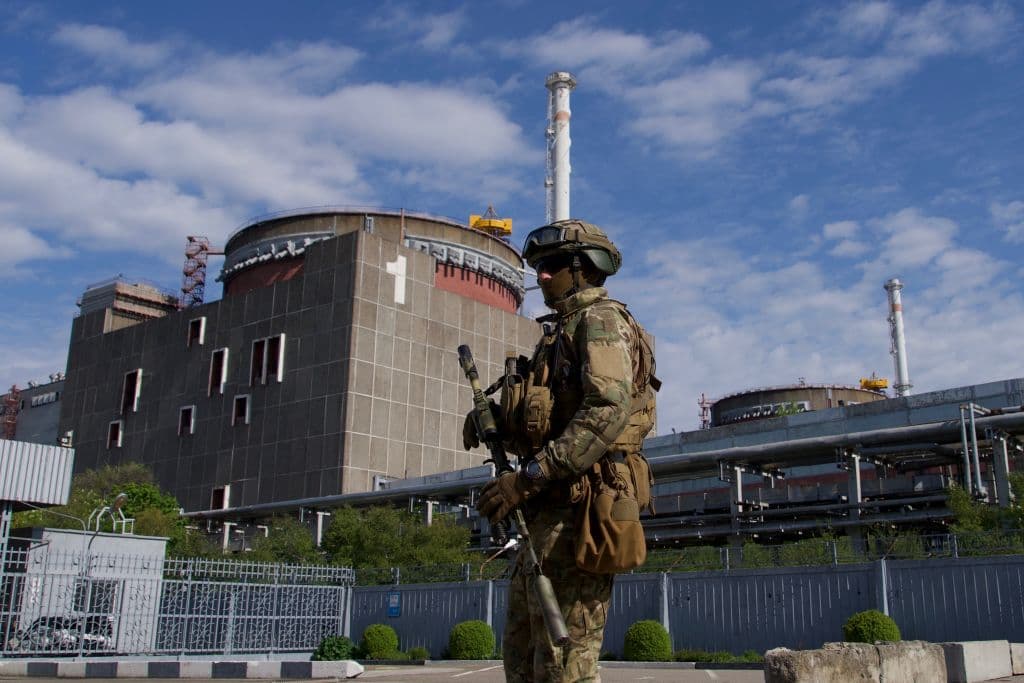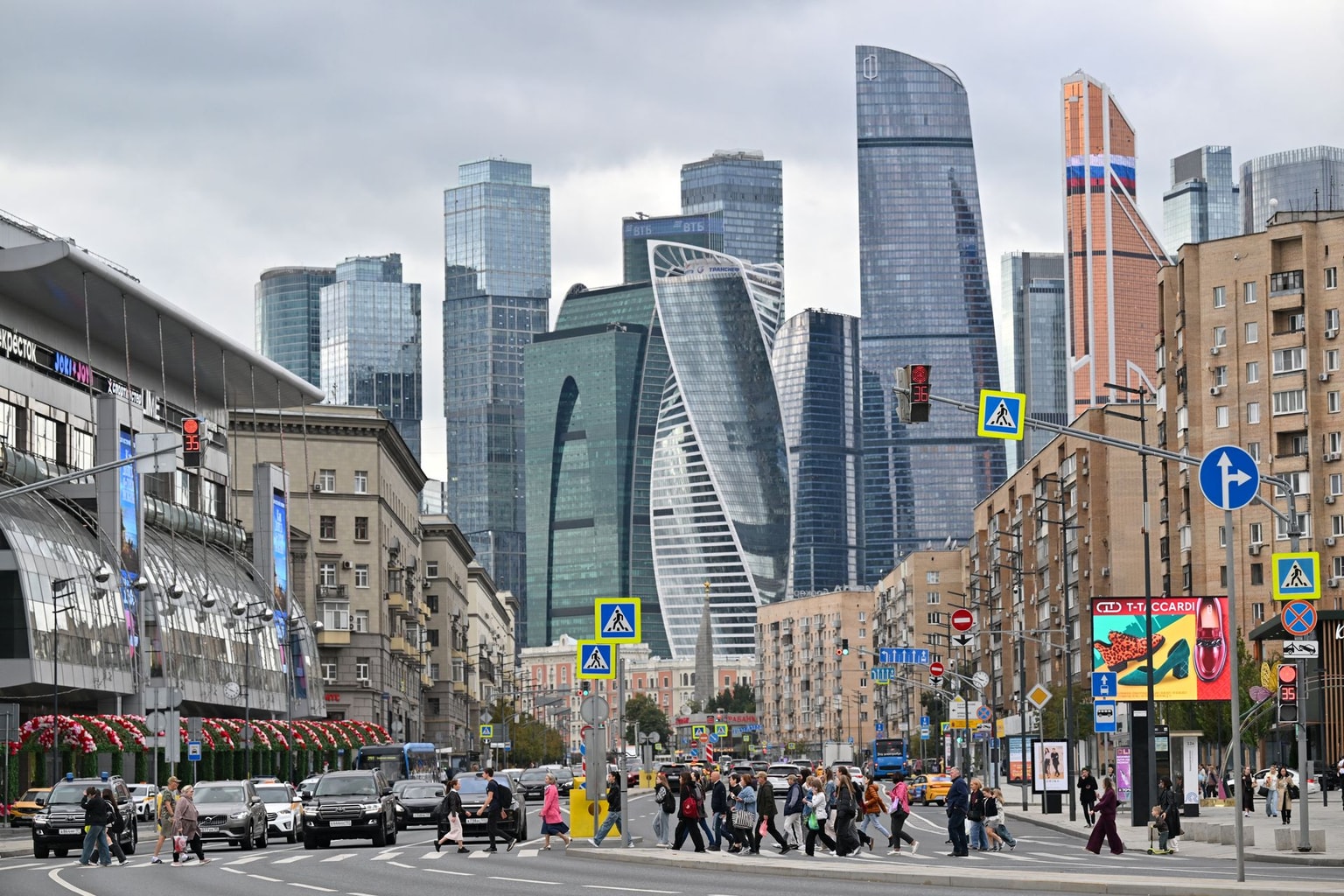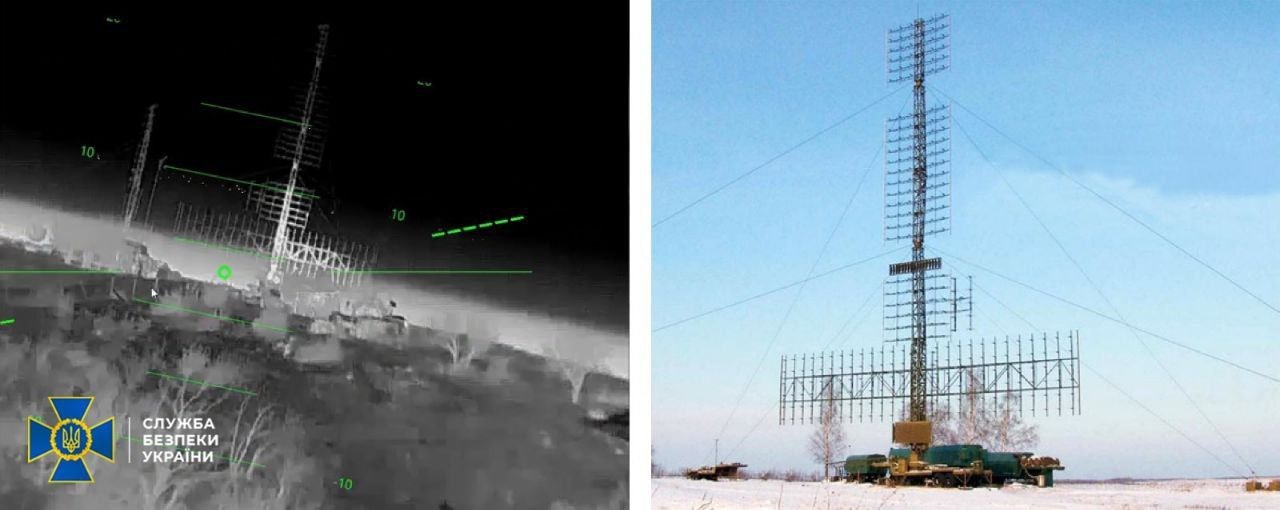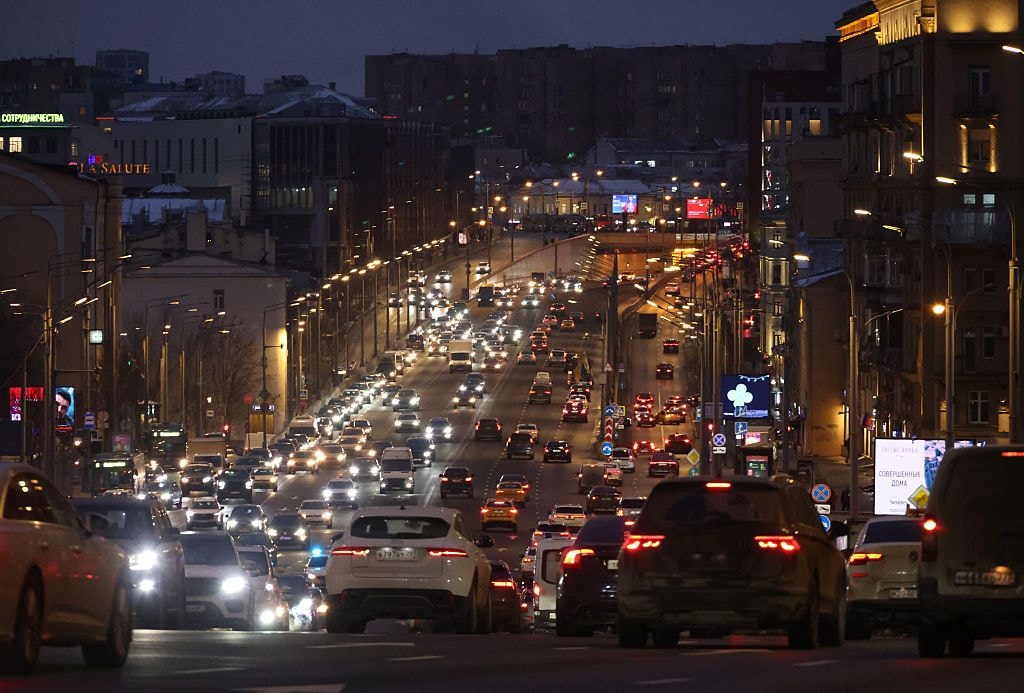Occupied Ukrainian plant becomes epicenter of Russia’s nuclear blackmail

Anticipating a Ukrainian counter-offensive in the country’s south, Russia is turning the six-reactor Zaporizhzhia Nuclear Power Plant in occupied Enerhodar into a ticking time bomb.
Repeated Russian shelling from within the plant’s territory, causing one of the reactors to shut down, has put the entire complex’s safety at stake.
The city of Enerhodar, occupied by Russia since March 4, lies on the bank of the Dnipro River at the edge of Russian-controlled parts of Zaporizhzhia Oblast.
Russia has been constantly shelling Ukrainian positions across the river from Enerhodar and accused Ukraine of firing back. Ukrainian authorities have had none of it, saying it's Russian forces causing fires at the site by using indiscriminate fire.
Rafael Mariano Grossi, the head of the UN’s International Atomic Energy Agency, called for an immediate end to all military action near the site, saying there is a “very real risk of a nuclear disaster.”
The latest Russian shelling, on Aug. 6, wounded one worker and damaged some of the plant’s sensors, making it virtually impossible to monitor radiation leaks, Ukraine’s state nuclear company, Energoatom, said.
According to the state company, Russia is playing on Western fears of a nuclear disaster in Ukraine to reduce foreign military support towards the country, while troops on the ground use the plant to protect themselves from Ukrainian strikes by transforming it into a military stronghold.
With Ukraine’s Energoatom and the UN’s IAEA losing access to the plant, the real picture on the ground remains eerily unknown.
Read also: Battle to end the war: Ukraine's chance to get edge over Russia
Nuclear stronghold
Findings of various open source intelligence resources show Russians regularly bringing a wide array of weapons into the plant’s premises.
Since Russian troops attacked and captured the plant on March 4, they have transformed the plant into a full-on military base.
The U.K. Defense Ministry noted that Russian troops are using the nuclear power plant turned military base to target Ukraine’s military and to reduce the risk of their equipment and personnel being attacked by Ukraine in return, the ministry said.
Local reports appear to witness rockets launched from the plant on Nikopol, a city under Ukraine’s control on the other bank of the Dnipro River.
According to The Insider, a Russian independent news outlet, Russian forces have mined the plant and placed Grad rocket batteries near the village of Vodyane, approximately four kilometers from the plant's reactors.
Energoatom reported on July 21 that Russian forces brought in 14 heavy artillery vehicles to the plant and are using the engine room near the first reactor as a storage facility for explosives, ammunition, and weapons.
The garrison’s entire arsenal is currently stationed close to the reactor’s main oil tank, containing the flammable oil that cools the steam turbine, Energoatom said.
On Aug. 10, the IAEA’s chief Grossi said Ukraine had informed the agency of a Russian shelling incident at the plant that caused “some damage.”
“Available radiation measurements continued to show normal levels at the site,” Grossi said.
For Hryhoriy Plachkov, the former head of Ukraine’s Nuclear Regulatory Inspectorate, Russia is playing with fire.
“In my opinion, the risks are very high,” Plachkov told the Kyiv Independent.
A lack of spare parts, faltering maintenance, and cutoff of outside backup power leads to the loss of cooling capacities, culminating in a meltdown of fuel inside an overheated reactor or cooling ponds for spent fuel rods — a scenario similar to the Fukushima disaster in 2011, according to John Erath, senior policy director for the Center for Arms Control and Non-Proliferation, who was quoted by the U.S. publication the Grid.
But all-out warfare on the site, where explosions would destroy the reactor containment and cooling systems, would create a disaster far worse even than Fukushima, according to Greenpeace.
Modern reactors, covered with a steel shell and hardened concrete are meant to withstand airstrikes, according to the Grid, but not surface-to-surface missiles.
Even the spent fuel would spew radioactive particles hundreds of kilometers from the reactor site across southern Ukraine and Russia.
Ivan Kovalets, head of the Department of Mathematical Environmental Modeling at the National Academy of Sciences of Ukraine, said a radioactive spike would likely first affect the southern regions of Ukraine, Russian-occupied Crimea, and later Romania, and Bulgaria.
Read also: Multiple explosions reported at Russian military airbase in occupied Crimea
Stealing electricity
According to Ukrainian authorities, Russia also has its eyes on the electricity produced at the plant.
Energoatom said Russia is aiming to “destroy the infrastructure of the station and damage all power transmission” to cut off electricity in Ukraine’s south.
“Hence, the shelling of the power plant is likely to continue,” Energoatom said in a statement.
About half of Ukraine's electricity comes from nuclear power, and the massive 5.7 GWh plant is the largest in the country, providing enough energy for roughly 4 million homes.
Before Russia’s full-scale invasion, the plant produced one-fifth of Ukraine's electricity and almost half the energy generated by the country's nuclear power facilities.
Disconnecting the plant from the Ukrainian power system and supplying electricity to Crimea, occupied by Russia in 2014 and facing power shortages ever since, would prove difficult, but possible.
To do this, Russia would need to physically disconnect the power lines between the plant and Ukrainian-controlled territories. Energoatom said that they have recorded Russia hitting power lines with shells.
Meanwhile, Russian occupation authorities have transferred control over the plant to Rosatom, Russia’s state-run nuclear energy company.
Russian grip
New rules come with repression in Russian-occupied Enerhodar.
On May 22, Russian soldiers shot Serhyi Shvets in his home over suspicion of giving information to Ukraine. In early July, the Wall Street Journal cited undisclosed sources writing that the city was poisoned by fear, with kidnappings of civilians occurring on a daily basis.
Dmytro Orlov, the mayor of Enerhodar, reported in June that Russian soldiers were putting Zaporizhzhia plant workers in basements to pressure them.
"Now they take people directly from the nuclear plant, say that someone betrayed them, and throw them into the basements,” he said.
But the plant’s workers are defiant, despite the danger. “We emphasize once again that there will be no control over the work of the plant by enemy formations,” Energoatom said.
Read also: Editorial: It is Amnesty International’s report that endangers Ukrainian civilians










